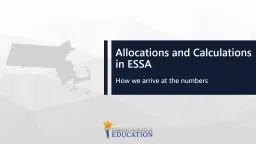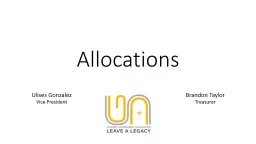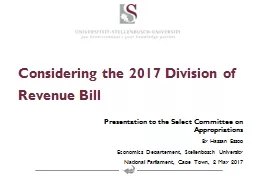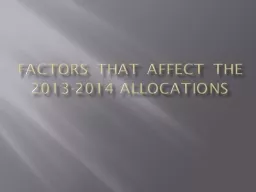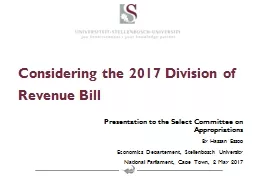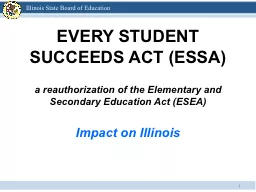PPT-Allocations and Calculations in ESSA
Author : jezebelfox | Published Date : 2020-08-05
How we arrive at the numbers CONTENTS 01 The Federal Appropriations Process 02 Title I 03 Title IV 04 Title IIA 05 Title III Contents The Federal Appropriations
Presentation Embed Code
Download Presentation
Download Presentation The PPT/PDF document "Allocations and Calculations in ESSA" is the property of its rightful owner. Permission is granted to download and print the materials on this website for personal, non-commercial use only, and to display it on your personal computer provided you do not modify the materials and that you retain all copyright notices contained in the materials. By downloading content from our website, you accept the terms of this agreement.
Allocations and Calculations in ESSA: Transcript
Download Rules Of Document
"Allocations and Calculations in ESSA"The content belongs to its owner. You may download and print it for personal use, without modification, and keep all copyright notices. By downloading, you agree to these terms.
Related Documents

